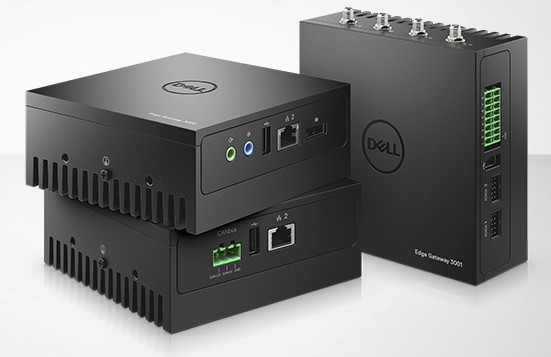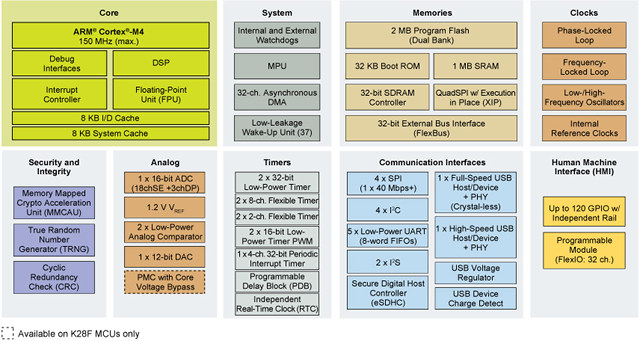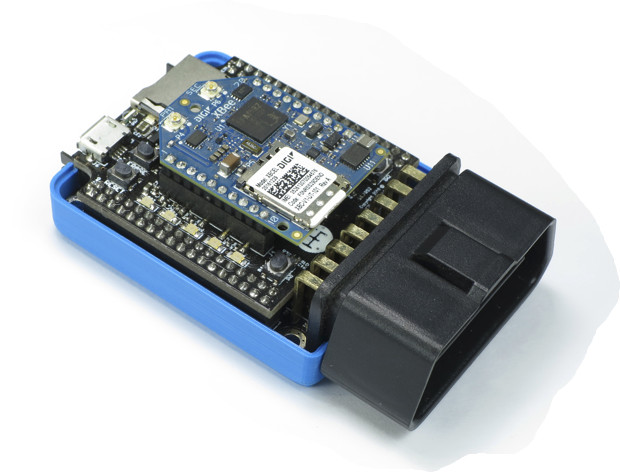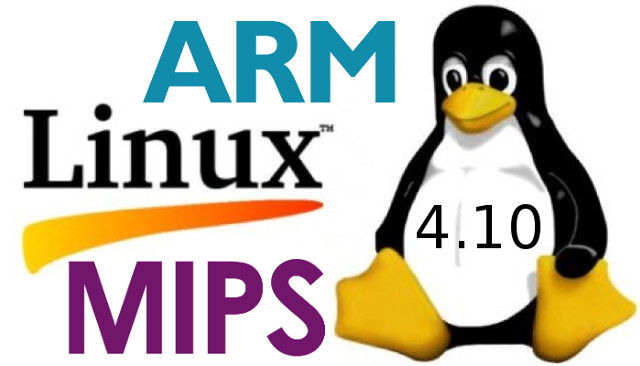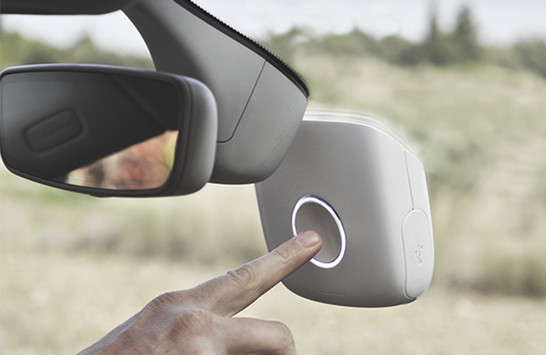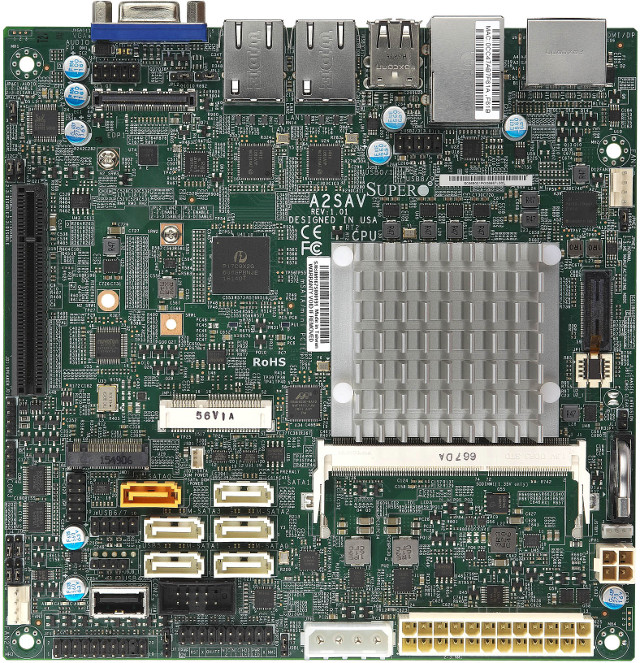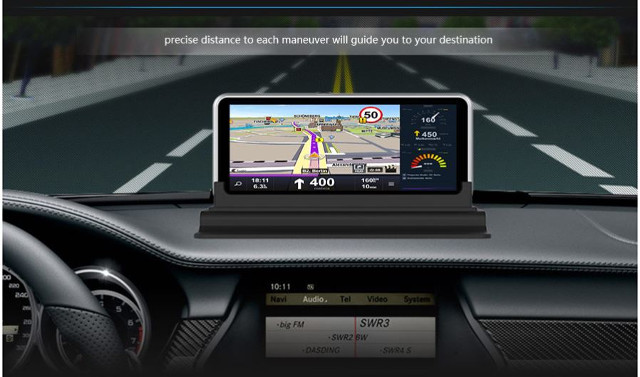Dell has recently introduced Edge Gateway 3000 series with three models powered by Intel Bay Trail-I processor, running Ubuntu Core 16 or Windows 10 IoT, with each model targeting respectively general-purpose automation, transportation & logistics, and digital signage and retail. The specifications for the three models can be found in the table below. Dell Edge Gateway 3001 Model for General-Purpose Automation Dell Edge Gateway 3002 Model for Transportation & Logistics Dell Edge Gateway 3003 Model for Media & Retail Kiosks SoC Intel Atom E3805 dual core processor @ 1.33 GHz (3W TDP) Intel Atom E3815 single core processor @ 1.46 GHz with GPU @ 400 MHz (5W TDP) System Memory 2 GB DDR3L-1066 Storage 8 or 32 GB eMMC flash Industrial-grade Micro-SD card: 8GB / 16GB / 32 GB / 64 GB Connectivity 1 x 10/100 Fast Ethernet (RJ-45) with PoE (15.4W) WiFi 802.11 b/g/n Bluetooth 4.0 LE Optional ZigBee […]
NXP Introduces Kinetis K27/K28 MCU, QorIQ Layerscape LS1028A Industrial SoC, and i.MX 8X Cortex A35 SoC Family
NXP pushed out several press releases with the start of Embedded World 2017 in Germany, including three new micro-controllers/processors addressing different market segments: Kinetis K27/K28 MCU Cortex M4 MCU family, QorIQ Layerscape LS1028A industrial applications processor, and i.MX 8X SoC family for display and audio applications, 3D graphic display clusters, telematics and V2X (Vehicle to everything). NXP Kinetis K27/K28 MCU NXP Kinetis K27/K28 MCU family is based on an ARM Cortex-M4 core clocked at up to 150 MHz with FPU,and includes up to 1MB embedded SRAM, 2MB flash, and especially target portable display applications. Kinetis K27/K28 MCUs share the following main features: 2x I2S interfaces, 2x USB Controllers (High-Speed with integrated High-Speed PHY and Full-Speed) and mainstream analog peripherals 32-bit SDRAM memory controller and QuadSPI interface supporting eXecution-In-Place (XiP) True Random Number Generator, Cyclic Redundancy Check, Memory Mapped Cryptographic Acceleration Unit K28 supports 3 input supply voltage rails (1.2V, 1.8V […]
Macchina M2 is an Open Source Hardware OBD-II Development Platform for Your Car (Crowdfunding)
ODB-II Bluetooth adapter and head-up displays to monitor and diagnose your car have been around for a while. I actually got two models to use with a Toyota Avanza and Torque Lite app, but never managed to make it work with my phone. Macchina M2 board is doing much of the same thing and more, as it is open source hardware, and supports more communications protocols including GPS, WiFi, 3G/LTE, BLE, and Ethernet using XBEE boards. Macchina M2 specifications: MCU – Atmel SAM3X8E ARM Cortex M3 processor @ 84 MHz (also used on Arduino DUE) with 96 KB SRAM, 512KB flash Storage – micro SD card socket, 32KB EEPROM via I2C USB – 1x micro USB port (USB device or host mode) Wireless XBee Socket – For Bluetooth LE, WiFi, GSM, 3G, LTE, I/Os 6x automotive level I/O pins to control 12V devices (Examples: relays, fans, lights, etc) OR act […]
Linux 4.10 Release – Main Changes, ARM & MIPS Architectures
Linus Torvalds has just released Linux 4.10: So there it is, the final 4.10 release. It’s been quiet since rc8, but we did end up fixing several small issues, so the extra week was all good. On the whole, 4.10 didn’t end up as small as it initially looked. After the huge release that was 4.9, I expected things to be pretty quiet, but it ended up very much a fairly average release by modern kernel standards. So we have about 13,000 commits (not counting merges – that would be another 1200+ commits if you count those). The work is all over, obviously – the shortlog below is just the changes in the last week, since rc8. Go out and verify that it’s all good, and I’ll obviously start pulling stuff for 4.11 on Monday. Linus Linux 4.9 added Greybus staging support, improved security thanks to virtually mapped kernel stacks, […]
Dride is a Voice Controlled Dashcam Driving Assistant Powered by a Raspberry Pi Board (Crowdfunding)
Next Thing introduced Dashbot Car Dashboard Assistant based on CHIP Pro module late last year, and it will get some competition with Dride, a driving assistant powered by Raspberry Pi, that can also be voice controlled like Dashbot, but includes a Pi camera to record videos, and alert the users of dangers using computer vision, for example when they drive too close to the car in front. The system leverages Raspberry Pi board and Pi Camera, and adds an outer shell, Dride’s Raspberry Pi HAT, and a car charger & cable. Some of the key features listed for the Dride include: Cloud support – Upload and store driving videos to your Dride profile ADAS – Safety alerts in case of lane deviation or frontal collision Voice – Voice commands for navigation & messaging Connectivity – Bluetooth, WiFi, and GPS The developers also provide “Dride – Passenger Seat Driver” app for […]
Supermicro A2SAV mini-ITX Board Powered by Intel Atom E3940 SoC Features 6 SATA Ports, Dual GbE, and Up to 9 USB Interfaces
Intel introduced three Atom E3900 series Apollo Lake processors last fall that target IoT, industrial and automotive applications, and Supermicro has designed A2SAV mini-ITX board powered by Atom x5-E3940 SoC that comes with lots of interfaces include 6 SATA ports, two Gigabit Ethernet RJ45 ports, and up to 9 USB interfaces accessible from connectors or headers. Supermicro A2SAV motherboard specifications: SoC – Intel Atom x5-E3940 quad core “Apollo Lake” processor @ 1.6 / 1.8 GHz with 2MB L2 cache, 12 EU Intel HD graphics (6.5W TDP) System Memory – 1x 204-pin DDR3 SO-DIMM socket for 2, 4, or 8GB 1866/1600/1333MHz Unbuffered non-ECC 204-pin SO-DIMM DDR3 Storage 6x SATA3 ports include 2x from SoC, and 4x via Marvel 88SE9230 controller 1x SATA DOM (Disk on Module) power connector 64Mb SPI Flash EEPROM with AMI UEFI BIOS supporting Plug and Play (PnP), DMI 2.3, ACPI 5.0, USB Keyboard, SMBIOS 2.7.1, and UEFI mSATA […]
FOSDEM 2017 Open Source Meeting Schedule
FOSDEM (Free and Open Source Software Developers’ European Meeting) is a 2-day free event for software developers to meet, share ideas and collaborate that happens on the first week-end of February, meaning it will take place on February 4 & 5, 2017 this year. FOSDEM 2017 will features 608 speakers, 653 events, and 54 tracks, with 6 main tracks namely: Architectures, Building, Cloud, Documentation, Miscellaneous, and Security & Encryption. I won’t be there, but it’s always interesting to look at the schedule, and I made my own virtual schedule focusing especially on talks from “Embedded, mobile and automotive” and “Internet of Things” devrooms. Saturday 4, 2017 11:00 – 11:25 – Does your coffee machine speaks Bocce; Teach your IoT thing to speak Modbus and it will not stop talking, by Yaacov Zamir There are many IoT dashboards out on the web, most will require network connection to a server far […]
Junsun H552C Android 4.4 Car DVR and GPS Navigation System Comes with a 7″ Display
There are plenty of Android car systems for sale with DVR and/or GPS navigation capabilities on the net, but sometimes they lack some features, or come in a 2 DIN form factor, which is nice if you know how to disable your car dashboard, but it might be a little complicated if you don’t. An alternative is to get an Android rear view mirror, but obviously the display is much smaller, and it reduces the usable space on the rear view mirror to see what’s going on behind. However, this morning I’ve come across Junsun H552C Android 4.4 system with a 7″ display, rear and front cameras, and GPS navigation system that might be easier to install since it sits on top of the dashboard, and is selling for $118.54 on Dealextreme. Junsun H552C specifications: Processor – Quad core CPU @ 1.3 GHz System Memory – 1GB RAM Storage – […]


